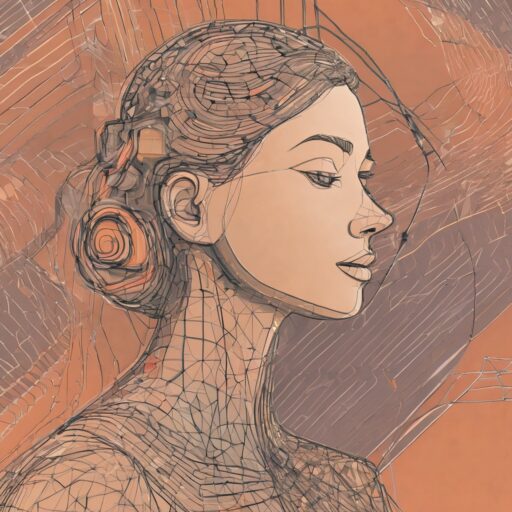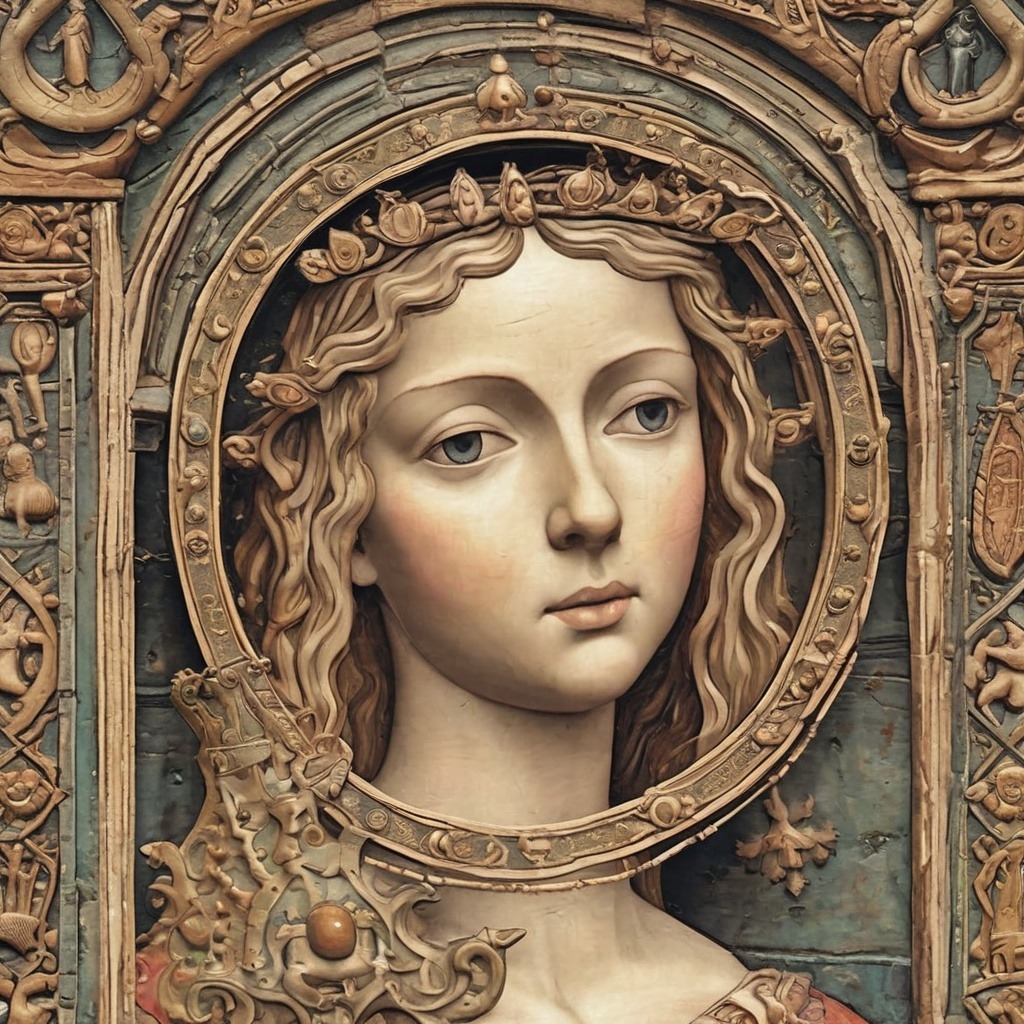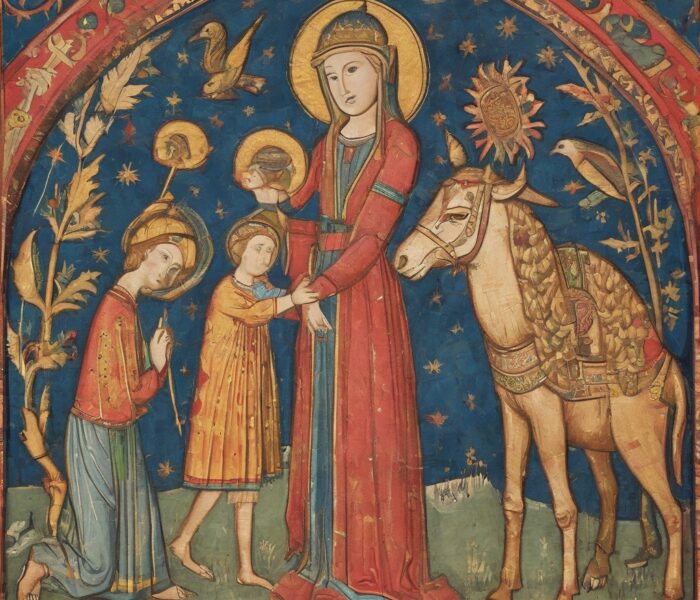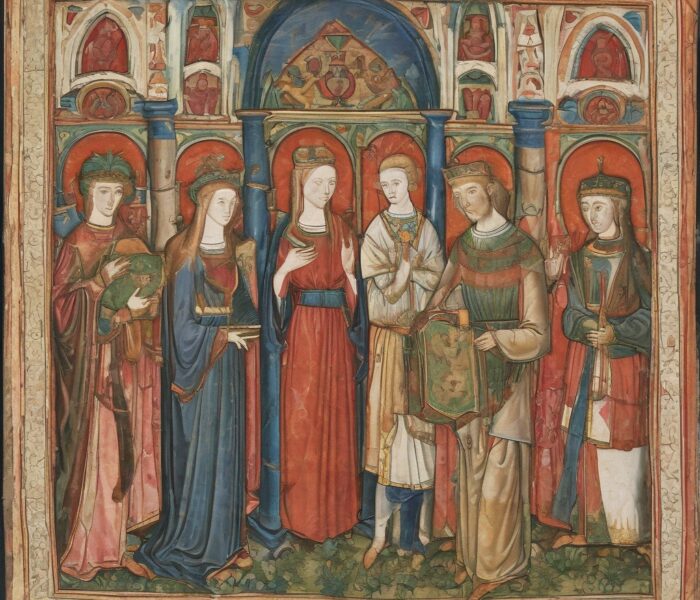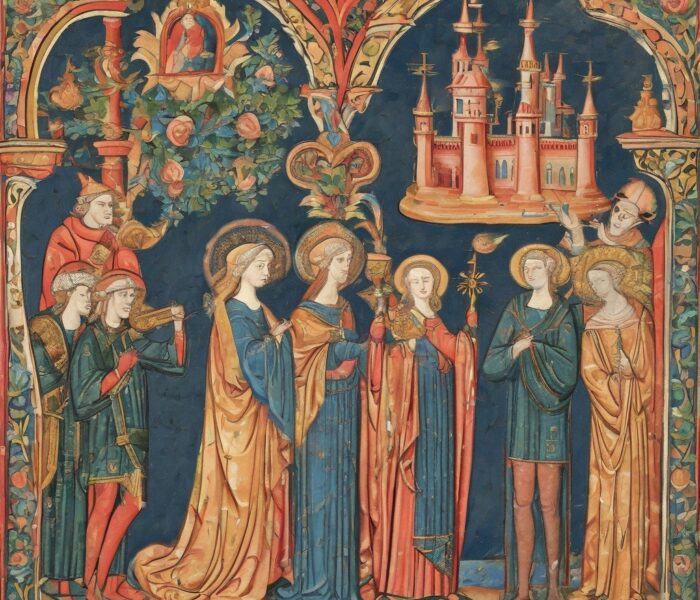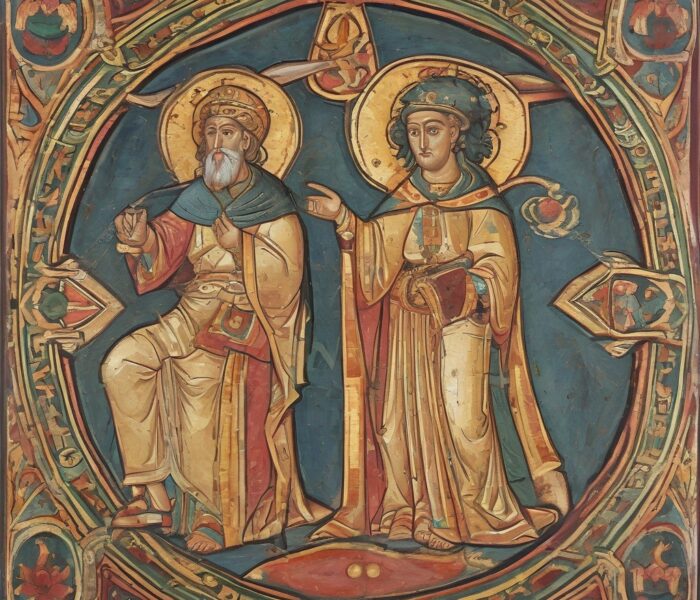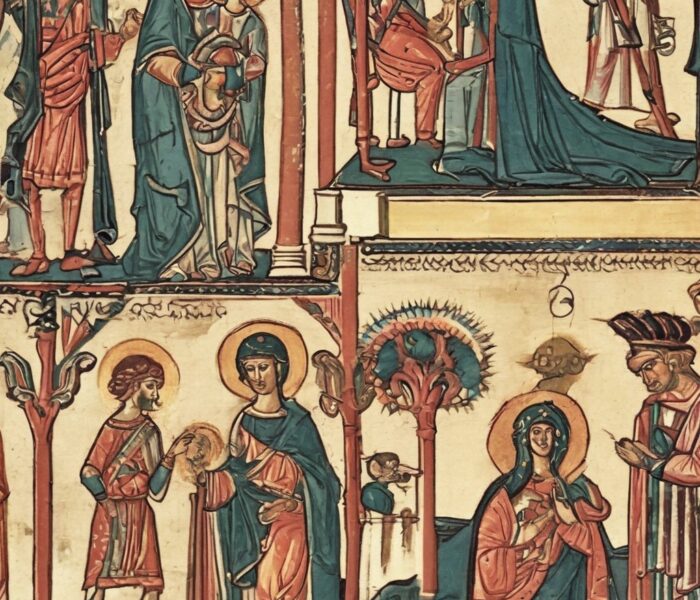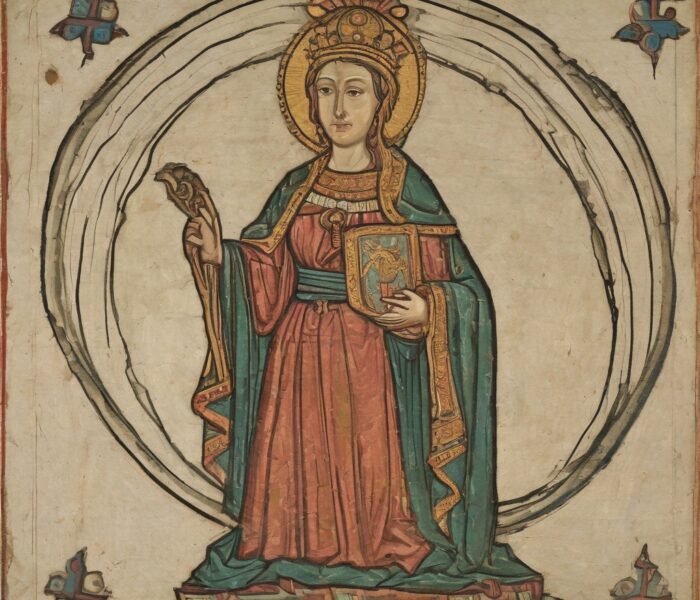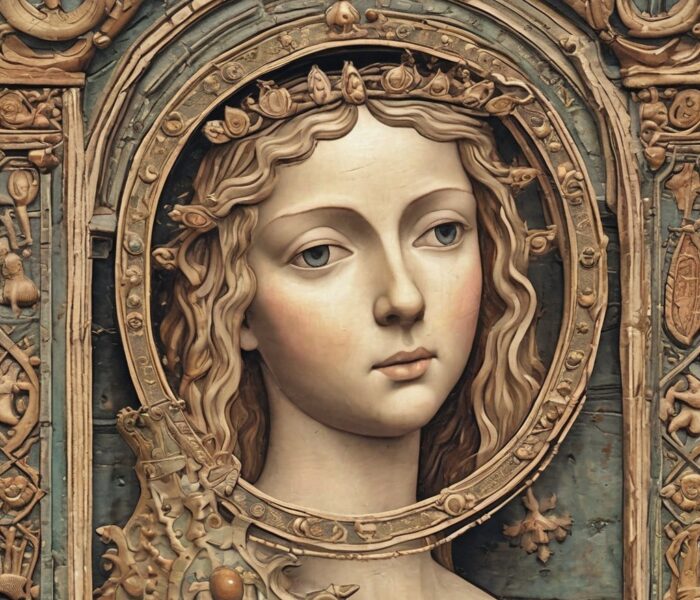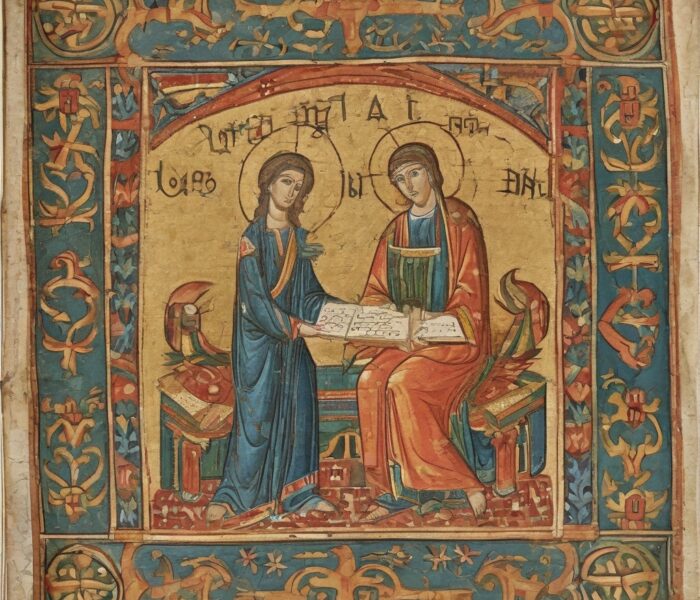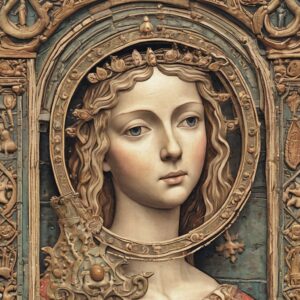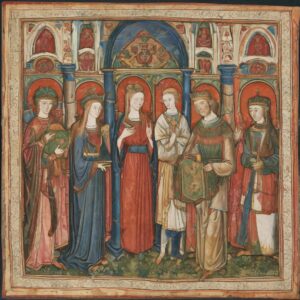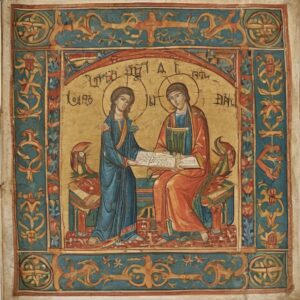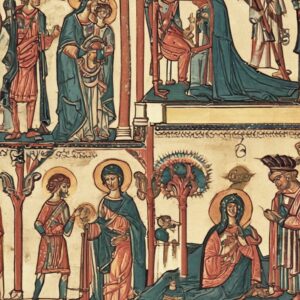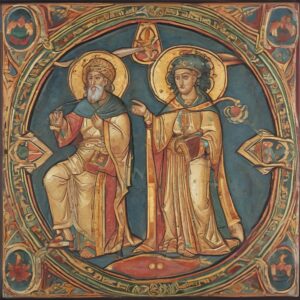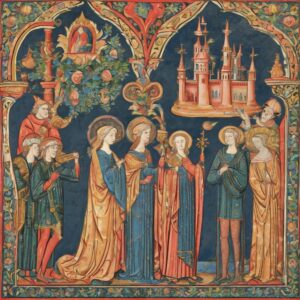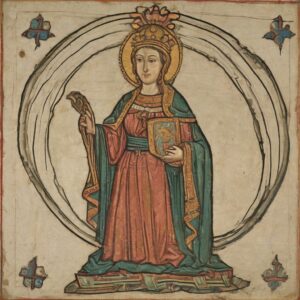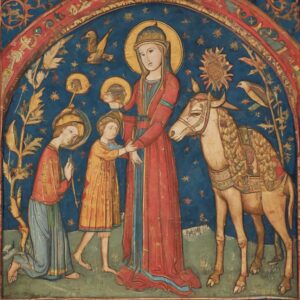
The medieval art that emerged in Europe during the Middle Ages is a fascinating testimony to the cultural and artistic development of that era. Shaped by deep-rooted religious beliefs, feudal structures, and a strong attachment to nature, medieval art reflects a world steeped in mysticism, symbolism, and spirituality.
The use of generative artificial intelligence (AI) in the context of medieval art opens up exciting opportunities to explore the distinctive features and styles of that era and create new works that capture the spirit and aesthetics of the Middle Ages. Generative AI algorithms can be trained to mimic the stylistic elements and themes of medieval art, generating artworks that reflect the complex symbols, iconographies, and artistic techniques of that era.
An essential feature of medieval art is its close connection to religion and the Christian church. The art of the Middle Ages served mainly religious purposes and was primarily commissioned by the church. Churches, cathedrals and monasteries were the main places for the creation and preservation of medieval works of art such as altarpieces, frescoes, sculptures and illuminated manuscripts. Generative AI algorithms can learn to recognize the religious symbolism and iconography of medieval artworks and generate artworks that capture the spiritual depth and significance of that era.
Another distinctive feature of medieval art is its quality craftsmanship and attention to detail. Medieval artists were masters of their craft and mastered a variety of craft techniques, including painting, sculpture, goldsmithing, and book illumination. Generative AI algorithms can learn to mimic the craftsmanship quality and aesthetics of medieval artworks, generating artworks that reflect the fine details and masterful execution of that era.
In addition, medieval art was often characterized by a strong connection to nature and the natural environment. Many medieval artworks included depictions of animals, plants, and landscapes, often with symbolic meanings. Generative AI algorithms can learn to capture the natural world of medieval artworks and generate artworks that reflect the close connection between humans and nature in this era.
When generating the art style of medieval art using Artificial Intelligence (AI), there are several important aspects to consider in order to successfully capture the characteristic features and styles of that era:
- Religious symbolism and iconography: Medieval art was strongly influenced by religious motifs, which often played a central role in the works. Generative AI algorithms should learn to recognize religious symbols, figures, and scenes and integrate them into their generated artworks. This can include the depiction of biblical stories, figures of saints, angels, demons, and other religious motifs.
- Quality craftsmanship and attention to detail: Medieval works of art are characterized by their quality craftsmanship and attention to detail. Artists mastered a variety of craft techniques, including painting, sculpture, metalwork, and book illumination. Generative AI algorithms should be able to mimic the fine details and masterful execution of medieval artworks and generate artworks with similar craftsmanship quality.
- Natural depictions and symbolism: Many medieval artworks contain depictions of animals, plants, and landscapes, often with symbolic meanings. Generative AI algorithms should learn to capture the natural world of medieval artworks and incorporate depictions of animals, plants, and landscapes into their generated works that reflect the close connection between humans and nature in that era.
- Typical stylistic elements and motifs: Medieval art encompasses a variety of styles and motifs, which can vary depending on the period and region. These include Gothic architecture, Romanesque sculptures, book illumination, minstrels, jousting tournaments, and much more. Generative AI algorithms should be trained to recognize typical stylistic elements and motifs of medieval art and to use them in their generated works.
- Adherence to historical contexts and conventions: It is important that generated artworks respect the historical context and artistic conventions of the medieval era. This means that the generated works should not only be stylistically correct, but should also correspond to the norms and expectations of the time in terms of content and theme.
By taking these important aspects into account, generative AI algorithms can create works of art that capture the essence and spirit of medieval art and open up new possibilities for creative design. However, it is important to emphasize that the generation of art through AI also raises ethical questions, especially in terms of originality, authorship, and cultural appropriation. Artists using generative AI should ensure that their work meets ethical standards and maintains integrity and authenticity in the art world.
Overall, the use of generative AI in the context of medieval art offers a fascinating way to explore the art of that era and create new works that capture the spirit and aesthetics of the Middle Ages. By combining human inspiration with machine intelligence, new works of art can be created that bring the heritage and cultural significance of medieval art into a modern and technologically advanced era.
